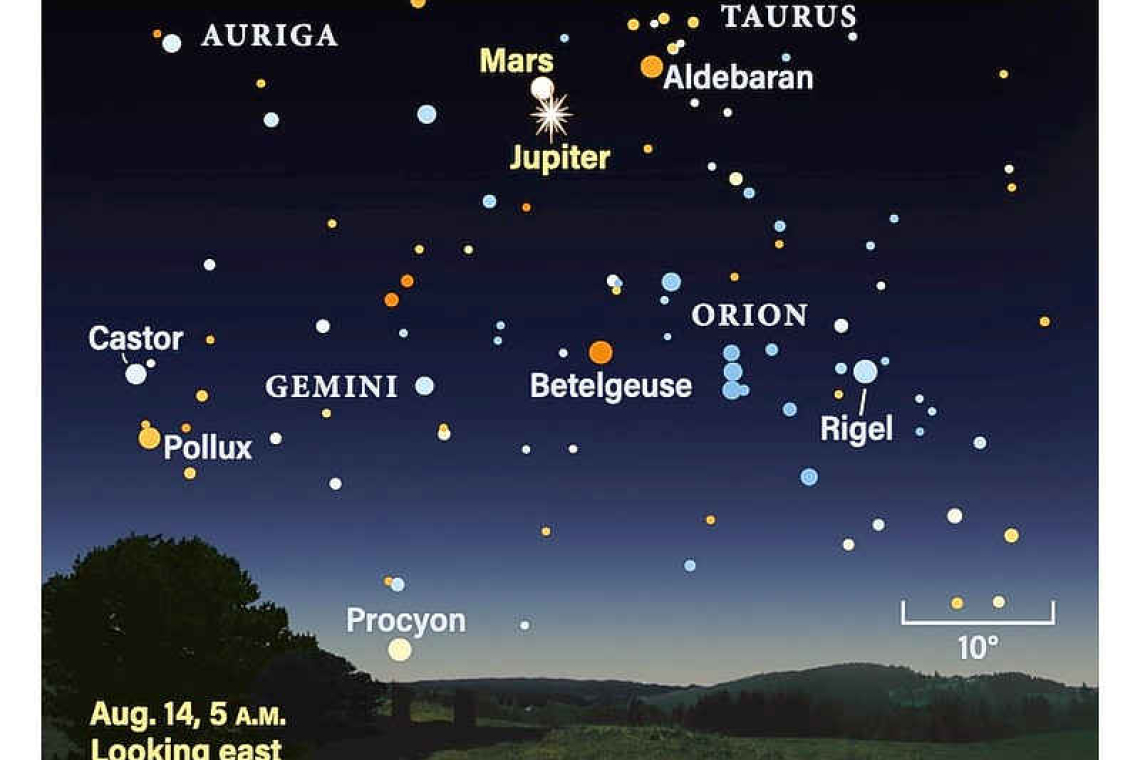~ St. Maarten’s Backyard Astronomy for August 9-11 ~
Sun rises at 5:53am
Sun sets at 6:41pm
Lunar phase: 1st quarter, waxing crescent
Moon rises at 10:44am
Moon sets at 10:28pm
I have been looking for those illusive meteors, so far to no avail. However, the Perseids will continue for another few weeks, and it is worth the search – if you don’t mind a walk out to the garden in the wee hours of the morning. This weekend is still a dark sky with little moonlight, so the viewing should be fine, especially if GEBE is out and the clouds clear away. The Perseids peak this Monday night, but it’s a wide peak and the nights before and after are certainly worth some serious sky searching. After midnight is your best bet. Refer to last week’s article for detailed information on how to best view the Perseid Meteor Shower.
Our lunar cycle is currently in the early days of a new cycle. By next weekend, the moon will be almost full, but we have a delicate crescent hanging low in the sky after sunset for now. You may notice the moon is near a bright star on Saturday night. It is a star known as Spica, the brightest star in the constellation of Virgo the Maiden. Sunday and Monday nights, the moon will be farther east at sunset, hanging in the constellation Libra. By Tuesday night, the moon is near the gorgeously brilliant star Antares in the constellation Scorpius. By Thursday, look for the teapot-shaped constellation Sagittarius the Centaur and the moon near the spout of the teapot.
All month long this month, the visible planets are on parade and through the starry sky and you can enjoy watching the show. Mercury is perhaps too close to the sun to see, but Venus is holding court after sunset as the “Evening Star”. Saturn rises about 8:30 on Saturday night. Keep an eye on Jupiter and Mars; they will have a close conjunction this weekend. Jupiter and Mars are spending the month in the constellation Taurus the Bull. Also, the shimmering Pleiades star cluster is near the two planets, just a bit to the west. Plus, the bright orange-ish star joining the scene is Aldebaran. It’s the brightest star in the constellation Taurus the Bull.
Thank you for keeping up with the Night Sky articles, backyard astronomy designed for St. Maarten sky viewing. FYI: If you are out later on in the week, note that each star rises about four minutes earlier each day than written here, and the moon rises 50 minutes later. Night Sky is researched and compiled by Lisa Davis-Burnett. Earthsky.org is a key resource for information and images. Questions or comments? Email This email address is being protected from spambots. You need JavaScript enabled to view it.







